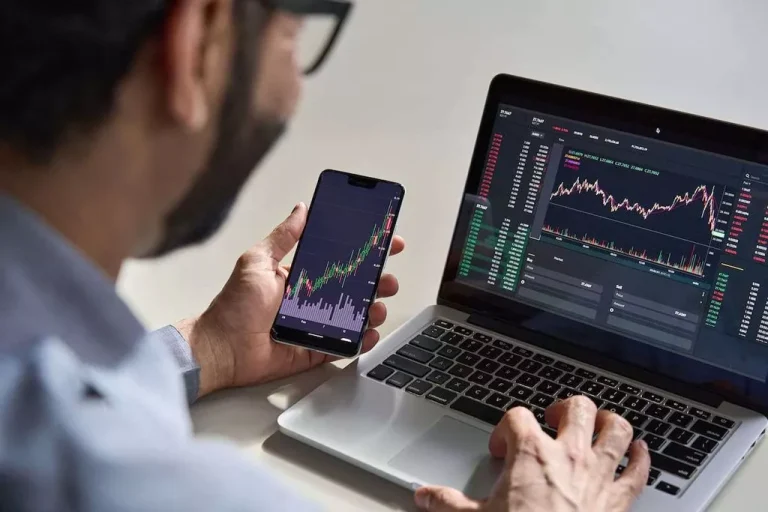Content
Securities products offered by StoneX Securities Inc. and investment advisory services offered by StoneX Advisors Inc. are intended for an audience of retail clients only. With access to multiple products and with freedom from the more onerous regulatory requirements imposed on banks, we can help ensure that you can use the capital you commit to your account as efficiently as possible. To do this, brokers must be able to regularly and repeatably https://www.xcritical.com/ ascertain and report, via an automated process, the key cost indicators at various levels of granularity, including the cost per trade, cost per exception and individual client profitability.
While the futures contract specifies a trade taking place in the future, the purpose of the futures exchange is to act as intermediary and mitigate the risk of default by either party in the intervening period. For this reason, the futures exchange requires both parties to put up an initial amount of cash (performance bond), Financial instrument the margin. To mitigate risk and the possibility of default by either party, the product is marked to market on a daily basis whereby the difference between the prior agreed-upon price and the actual daily futures price is settled on a daily basis. This is sometimes known as the variation margin where the futures exchange will draw money out of the losing party’s margin account and put it into the other party’s thus ensuring that the correct daily loss or profit is reflected in the respective account. If the margin account goes below a certain value set by the Exchange, then a margin call is made and the account owner must replenish the margin account. Thus on the delivery date, the amount exchanged is not the specified price on the contract but the spot value (i.e., the original value agreed upon, since any gain or loss has already been previously settled by marking to market).
In the dynamic landscape of financial markets, exchange-traded and over-the-counter (OTC) derivatives both have their part to play with respect to their use by etd derivatives institutional investors, corporations and individual traders. Each has particular merits and limitations, and the choice to use one or the other to support investment or commercial strategies will be determined by individual requirements with respect to customisation, liquidity, risk tolerance and regulatory rigour. Leveraging data solutions significantly enhances efficiency in reference data management, ensuring streamlined operations and informed decision-making across the financial landscape. They set the institutional rules that govern trading and information flows about that trading.
Our processing services sit at the heart of the post-trade lifecycle across OTC and exchange traded derivative markets, standardising and automating workflows across asset classes. Derivatives are securities whose value is dependent on or derived from an underlying asset. For example, an oil futures contract is a type of derivative whose value is based on the market price of oil. Derivatives have become increasingly popular in recent decades, with the total value of derivatives outstanding estimated at $715 trillion on June 30, 2023.
From a post-trade perspective, machine-learning-based products have already proven to address significant inefficiencies in trade reconciliation, regulatory reporting, and transaction billing. OTC dealers convey their bid and ask quotes and negotiate execution prices by telephone, mass e-mail messages, and, increasingly, text messaging. The process is often enhanced through electronic bulletin boards where dealers post their quotes.
Nevertheless, monetary tightening, economic slowdown, a strong US dollar and warmer-than-usual temperatures are already softening the pressure on energy prices, except for natural gas, for which we still see scarcity in European physical markets. Futures markets serve as exchanges where participants engage in buying and selling underlying assets for future delivery. These markets offer access to a diverse array of global financial instruments, including commodities, forex, interest rates, and indices. The history of futures markets dates back centuries, with modern iterations emerging in 19th-century Chicago, notably through the Chicago Mercantile Exchange (CME), a leading futures exchange. Electronic trading has changed the trading process in many OTC markets and sometimes blurred the distinction between traditional OTC markets and exchanges.
Counterparty risks are a type of credit risk where the parties involved may fail to deliver on the obligations outlined in the contract. If one party becomes insolvent, the other party may have no recourse and could lose the value of its position. A speculator who expects the euro to appreciate vs. the dollar could profit by using a derivative that rises in value with the euro. When using derivatives to speculate on the price movement of an underlying asset, the investor does not need to have the actual underlying asset in their portfolio. Intrinsic to simplifying and standardising Exchange Traded Derivatives processing – post-trade. At their core, derivatives serve as a means to manage risk, offering avenues for both hedging against potential losses and speculating on market movements for potential gains.
A clear way to drive incremental efficiency in post-trade processing is to establish streamlined cross-asset operational teams and technology to process trades throughout their lifecycle. By adopting a multi-asset strategy, post-trade workflows can be unified, and functions such as risk and financing can be managed from a single, central point – all benefitting from optimal resource usage, business-wide oversight, and increased agility. Many traditional trading floors are closing, and orders and executions are now all communicated electronically. The London Stock Exchange and the NASDAQ Stock Market are completely electronic, as is Eurex, a major futures exchange. The NYSE bought the electronic trading platform Archipelago and is moving increasingly toward electronic trading, as is derivatives exchange CME Group, which maintains both open-outcry and electronic trading.
Trade affirmation is simplified by our centralised platforms, where counterparties can review trades submitted by brokers, dealers or trading venues via a single consolidated user interface. Once created, the parties in a forward contract can offset their positions with other counterparties, which can increase the potential for counterparty risks as more traders become involved in the same contract. Many derivatives are, in fact, cash-settled, which means that the gain or loss in the trade is simply an accounting cash flow to the trader’s brokerage account. Futures contracts that are cash-settled include many interest rate futures, stock index futures, and more unusual instruments such as volatility futures or weather futures.

This will allow firms to sharpen their competitive edge and take advantage of new opportunities in the financial services landscape. To succeed in this market, firms must now adopt more sophisticated technology to support the increase in trade volume. A derivative is a financial contract linked to the fluctuation in the price of an underlying asset or a basket of assets. Common examples of assets on which a derivative contract can be written are interest rates instruments, equities or commodities. Exchange-Traded derivatives (ETDs) are standardised financial contracts traded on organised exchanges. ETDs follow predefined contract specifications relating to contract size, expiration date and other terms.
By standardising workflows, trade and reference data, contract terms and interfaces, we reduce complexity and eliminate duplication throughout the post-trade lifecycle, automating the messaging and matching required to confirm, give-up, allocate, clear and report trades. FIS® CD Trade Allocator provides trade allocation software that streamlines trade allocation and post-trade processing workflows into a one consolidated dashboard. FIS® OTC Derivatives and Valuations Services web-based solution delivers OTC valuations of derivatives and structured products for individual trades as well as full portfolios. Automate accounting and reporting processes to deliver fresh insights and real-time responsiveness to private equity investors. Derivatives were originally used to ensure balanced exchange rates for internationally traded goods.

The key difference between options and futures is that with an option, the buyer is not obliged to exercise their agreement to buy or sell. As with futures, options may be used to hedge or speculate on the price of the underlying asset. Examples of derivatives include futures contracts, options contracts, swaps, and contracts for difference (CFDs).
Enabling investment management firms to allocate post-trade on either a bilateral basis or via give-ups to multiple Prime Brokers, ensuring accurate booking of fund and account level trading activity. Our next-gen solution gives you a single, unified solution for all your post-trade processing requirements, from exchange-traded to OTC-cleared. Many derivative instruments are leveraged, which means a small amount of capital is required to have a sizable position in the underlying asset.
Each derivative type presents distinct characteristics and applications, providing investors and institutions with versatile tools to navigate financial markets. ETDs are traded on most exchanges, such as the Bombay Stock Exchange, CME, or the Intercontinental Exchange (ICE), and can bring you good returns if you implement good trading strategies. ETDs might be less risky than OTCs due to standardisation, reduced counterparty risks and better market accessibility. However, for successful trading, you must have a profound knowledge of the trends in the financial markets and define your investment objectives. Commodities are widely used for derivative trading in most countries, with the first derivative exchange being the Chicago Board of Trade. Multiple exchanges offer trading opportunities in thousands of commodities, making it difficult to trade.
leave a comment